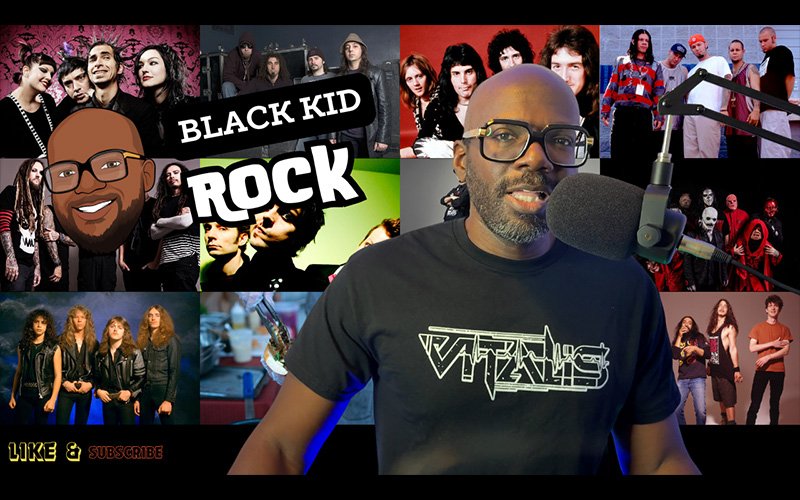In this honest reflection, Sean A. Russell shares what it was like to be a Black kid in the 1990s developing a love for rock music—at a time when it wasn’t culturally accepted in his community. From hiding his early musical interests to launching a media platform where he interviewed rock legends, this story challenges stereotypes and redefines what musical identity can look like for young Black listeners.
How It All Started
Growing up as a Black kid in South Florida during the 1990s, music was everything. It was more than entertainment—it was culture, identity, and often, a form of social currency. And if you were Black, the unspoken rule was clear: you listened to Hip Hop, R&B, maybe Gospel. Rock music? That was considered off-limits or, at the very least, “not for us.”
But like many unspoken rules, that one was meant to be broken.
The Moment That Shifted Everything
I still remember the day. Hallandale High School. Ms. Foster’s graphic design class. A group of students—different in dress, energy, and attitude—were playing music from the computers. Not rap. Not R&B. Rock.
Then it hit me.
“Sugar” by System of a Down came blasting through the speakers, and something inside me responded. The sound was chaotic, electric, raw—nothing like what I’d been used to. I was hooked. But I kept it quiet. In my world, openly enjoying rock music felt like crossing a line.
A Childhood Full of Contrasts
My early exposure to music wasn’t limited to Hip Hop. My parents leaned more toward Top 40 radio—Phil Collins, Peter Gabriel, Tina Turner, Chicago. Those melodies shaped my childhood. I didn’t grow up in a house full of rap tapes. It wasn’t until Yo! MTV Raps and Rap City that I became fully immersed in the Hip Hop movement. I still remember Run DMC’s “Christmas in Hollis” playing during the holidays—it felt like cultural magic.
So when I heard rock, it wasn’t foreign. It was just…off-limits. Or at least it seemed that way.
The Turning Point: Hip Hop Meets Rock
What gave me “permission” to fully explore rock was the collision of genres. Limp Bizkit featuring Method Man and DMX. That track changed everything. I bought the album for that collaboration—but I stayed for the rest. And with each listen, I felt the wall between “acceptable” and “authentic” begin to crumble.
Korn. System of a Down. Linkin Park. Rage Against the Machine. These weren’t just bands—they were bridges. And I walked across them every chance I got.
The Deep Dive: Finding My Voice Through Sound
The floodgates opened once I allowed myself to embrace rock music fully. I found myself mesmerized by bands like Mindless Self Indulgence. Their sound was experimental, boundary-breaking, and spoke to a part of me I hadn’t known how to express. And then came Queen.
Everyone knew Bohemian Rhapsody, but Somebody to Love became my personal anthem. It had everything—soul, power, longing. That song still stops me in my tracks to this day.
Hip Hop Never Left Me
Let me be clear: I never stopped loving Hip Hop. In fact, I probably know more rap verses than rock lyrics. But the rock songs I connected with? They lived somewhere deeper. They didn’t replace my cultural roots—they helped me explore my personal identity.
The Full Circle Moment
Years later, I founded a music media platform that allowed me to interview artists from both worlds—rock and Hip Hop. Fall Out Boy. Flo Rida. I sat across from the very people whose music helped shape my teenage years.
It was a powerful reminder that the parts of ourselves we hide often end up becoming the source of our greatest breakthroughs.
Final Thoughts: Claim Your Sound
To any young person—especially young Black kids—feeling the pressure to like what’s expected instead of what resonates: don’t let anyone dictate your playlist. Explore. Expand. Listen with your whole heart.
Music doesn’t ask for permission—it asks for connection.
And when you stop hiding what you love, you just might find the future waiting on the other side of the speakers.

